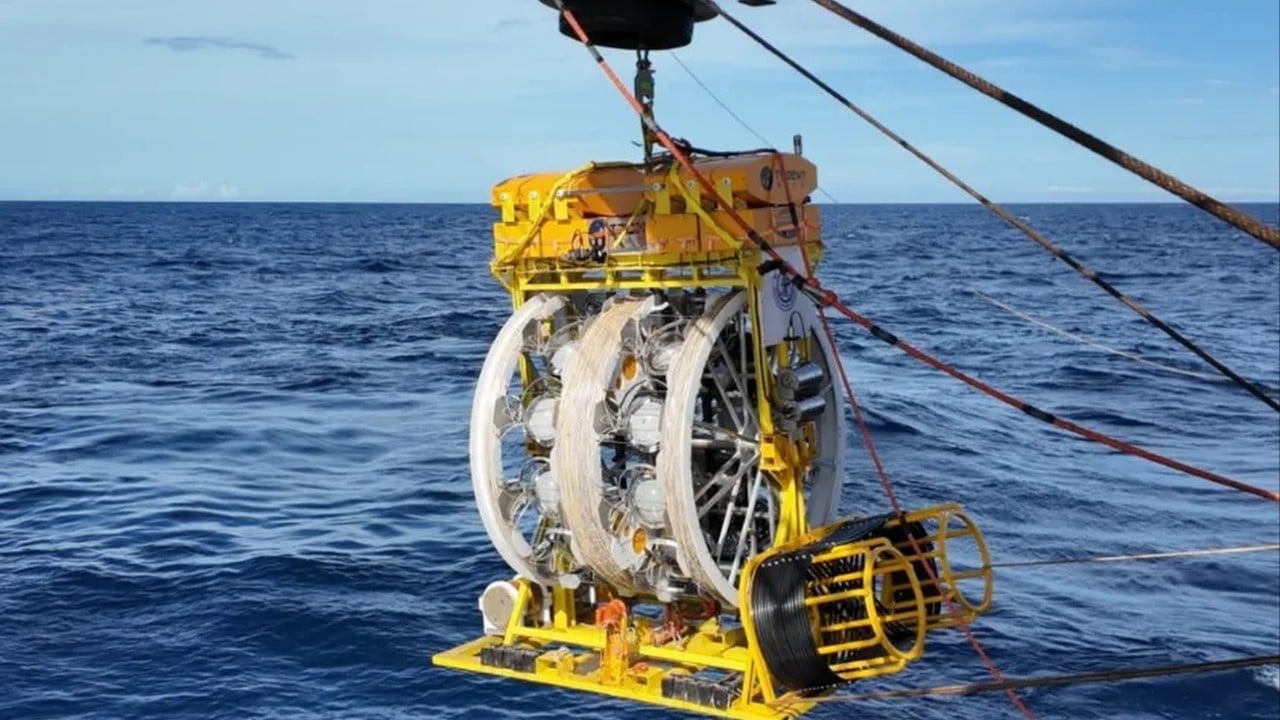
Chinese researchers have tested a submersible vehicle designed to help them build one of the world’s largest neutrino observatories in the South China Sea – a facility that will study the ghostly subatomic particles that stream through the cosmos with barely a trace.
The Subsea Precision Instrument Deployer with Elastic Releasing (Spider) uncoiled a 700 metre (2,300ft) string of 20 sensor balls at a depth of about 1,700 metres (5,580ft), according to the team from Shanghai Jiao Tong University’s Tsung-Dao Lee Institute.
Each ball in the sea trial was positioned at the exact angle needed to capture neutrinos from cosmic or atmospheric nuclear reactions, the researchers said in a media statement issued on Sunday.
Neutrinos are nearly weightless, electrically neutral particles that are born in violent events such as the nuclear reactions inside stars. They seldom interact with matter and billions stream through our bodies every second without leaving a trace.
The Chinese researchers said the Spider, with its precisely positioned sensor balls, could one day help to reveal the origins of cosmic rays. It could also be easily upgraded to carry more sensors, they said.
The location of the test was not disclosed, but a video released with the statement showed the device being retrieved at sea.


